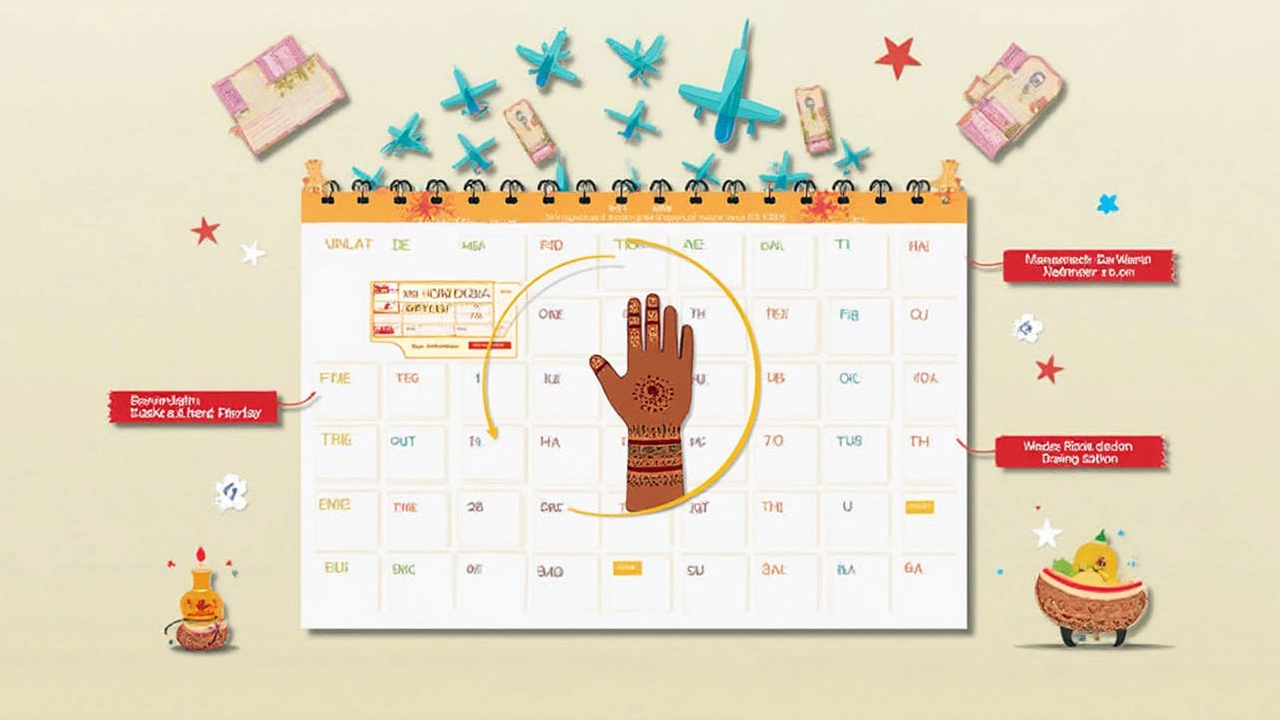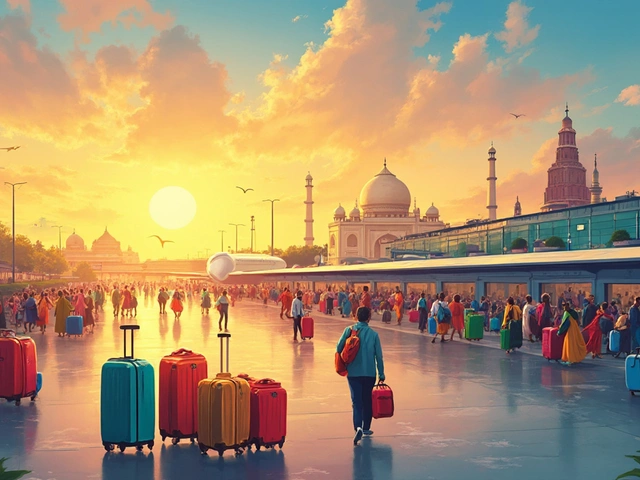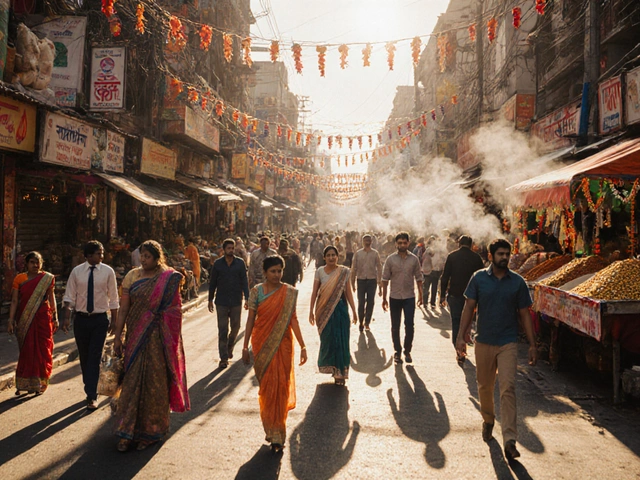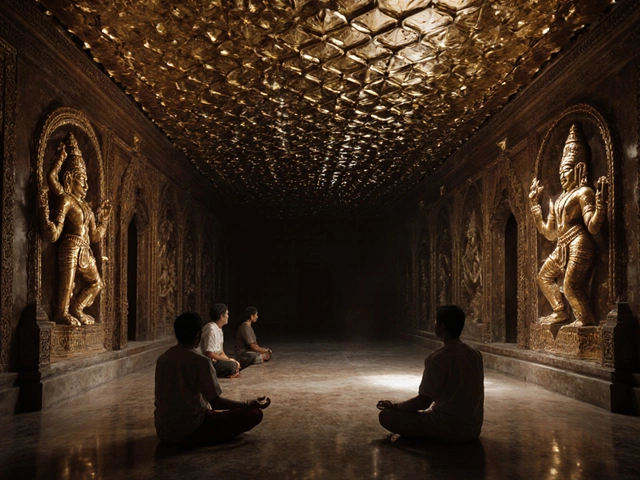If you’re dreaming of India but stressing about ticket prices, you’re not alone. A quick search for flights can leave you dizzy—prices spike, drop, then hike up again for no obvious reason. So, how early should you actually book those tickets to get the best deal?
The truth is, airlines are sneaky with their pricing. Book too soon and you might pay more than you need to. Wait too long and the cheap seats vanish. Knowing when to hit that “buy” button isn’t just luck—it’s a science, backed by data from booking sites that track thousands of fares every day.
The timing for India has its own quirks. Ticket costs swing wildly around festivals, school breaks, and even based on which city you’re flying into. If you want to avoid overpaying (and trust me, nobody likes that $400 difference with the guy sitting next to them), getting the timing right is everything. But don’t worry, we’ll break down all the smart moves so you can fly for less and save those extra rupees for exploring India, not your airfare.
- Why Timing Your Booking Matters
- Sweet Spot: How Many Months in Advance?
- Seasonal and Holiday Price Hikes
- Tools and Tricks for Finding Deals
- Last-Minute Myths Busted
Why Timing Your Booking Matters
If you’re looking to fly to India on a budget, the timing of your purchase is everything. Airlines set prices based on supply, demand, and sometimes just what they think they can get away with. Prices can change by the day or even by the hour. So, waiting just a week (or even a day) can mean either saving big or paying way more for the exact same seat.
Here’s the thing: flights to India aren’t like grabbing an Uber or booking a last-minute hotel. These tickets have a dynamic pricing system that takes into account seasonality, upcoming festivals, and how many people are searching for flights to the same destination. Research from popular fare-tracking sites shows international flight prices can change over 60 times before departure.
To put things in perspective, check out this breakdown of fare changes over time:
| Time Before Departure | Average Price Increase |
|---|---|
| 6+ Months | +10% (often too early) |
| 3-5 Months | Base Price (sweet spot) |
| 1-2 Months | +15%-25% |
| 2 Weeks or Less | +35%-50% |
Ticket prices jump especially hard two months out and again at the two-week mark. So, if you’re trying to score the lowest book tickets to India price, don’t just hope for a lucky last-minute deal. Airlines are counting on the fact that most folks wait until they’ve locked in vacation days or visas — and then they ramp up the prices, fast.
Fact: According to the 2024 Expedia Air Travel Hacks report, booking international tickets about four to five months in advance saves travelers up to 20% compared to waiting until the last minute. That extra cash? Think food, tours, or a fancy hotel in Mumbai, not blown on your flight.
So timing isn’t just about getting a seat. It’s about getting the best possible deal and stretching your travel budget way further in India.
Sweet Spot: How Many Months in Advance?
Here’s the million-rupee question: when’s the perfect time to book tickets to India if you want the lowest price? Well, it isn’t a wild guess. Booking platforms like Google Flights and Skyscanner have done the math, watching how fares change month by month. Most experts agree that booking international flights to India 2 to 5 months before your departure hits the sweet spot. And for peak seasons like December or school holidays, 6 months might give you that extra edge.
Let’s be real—just because you hope for a last-minute steal doesn’t mean it’ll happen. Flights to India don’t usually get cheaper as you wait; in fact, prices creep up as seats fill. A CheapAir study showed tickets to India from the US were at their rock-bottom price about 110 days out. That’s just over 3 and a half months. Check out how prices typically move:
| Months Before Departure | Typical Price Trend |
|---|---|
| 11–6 months | Stable, not the cheapest |
| 6–4 months | Prices start dipping |
| 4–2 months | Cheapest range for tickets |
| 2–0 months | Prices start climbing again |
It’s tempting to think earlier is always better. But airlines actually test the waters early on, keeping fares fairly high to grab last-minute planners or those who just want to lock in plans. If you can, aim to start searching around 5 months out, but don’t panic-buy. Set fare alerts and watch the price trend. The best window for most travelers is between 120 and 60 days before your trip.
As Scott Keyes, founder of Going.com, puts it:
“Booking about 3 to 4 months in advance gives you a great balance of choice and price, especially for competitive routes like US to India.”
One more thing: non-stop routes and budget airlines follow their own patterns. Sometimes, seats on direct flights sell out faster, so you might want to be closer to the 5–6 month mark for those. For connecting flights, it’s ok to wait a little longer. Scroll back through your favorite booking app’s fare calendar—if prices seem way higher than the previous weeks, you’ve likely missed the bottom and it’s better to book sooner rather than later.

Seasonal and Holiday Price Hikes
Ready for a little shock? Ticket prices to India can double—or even triple—during certain times of year. That’s usually because so many people head there at once for holidays, festivals, and school breaks. If you don’t know these key periods, you could end up paying way more than you need to.
The biggest surge comes during December and January, right around winter break in the US, UK, and Europe. Everyone’s itching for a warm escape or to see family, so airlines hike prices. Expect big jumps leading up to Christmas and New Year's. It’s the worst time if you’re chasing cheap flights India deals.
Indian festivals can also ruin your hunt for cheap fares. Diwali (usually October or November), Holi (March), and Indian school holidays (May and June) send prices up fast, especially if you’re headed to big metros like Delhi, Mumbai, or Bangalore. Even smaller cities get pricier because relatives are flying back for celebrations.
If you’re flexible, try traveling during shoulder seasons. These are April and late September—that sweet spot after the winter rush and before the festival frenzy. Monsoon (July and August) is the cheapest, but yeah, it’s wet. Airlines drop fares just to fill planes at that time, so if you don’t mind a little rain, you can score a deal.
- Avoid booking flights during major Indian and Western holidays if you want lower prices.
- Check local school calendars for India and your own country—breaks mean higher fares.
- Pay close attention to the exact festival dates, as they shift every year based on the lunar calendar.
The bottom line: the calendar is your best friend. Mark the heavy travel times and dodge them if you can. That way, you’ll keep more cash in your wallet for all the street food and adventures waiting when you land.
Tools and Tricks for Finding Deals
The internet is full of websites promising the lowest fares, but not all are worth your time. If you want real results, you need to mix a few clever tricks with the right tools. Here’s how travelers to India cut costs and avoid headaches.
First off, always start with a flight comparison site like Google Flights or Skyscanner. These sites not only compare prices on tons of airlines, but some even show price trends for your route. Set up price alerts on both—you’ll get emails when fares drop, and that’s usually when you want to buy.
- Best time to book flights India: Data from Skyscanner suggests the best window for buying tickets to India is usually 2-4 months before you plan to fly. For peak times (like Diwali), booking even earlier, up to 6 months, is smart.
- Flexible dates make a huge difference. Both Google Flights and Skyscanner let you search by month. Shifting your trip by just a day or two can sometimes cut $150 or more off your ticket.
- Always use incognito mode or clear your browser cookies before searching. Some airlines have been caught hiking prices for routes you check over and over.
For flights with long layovers, try your luck with apps like Airwander or Kiwi.com—they help you piece together multi-city trips that can be far cheaper. If you’re open to arriving in other cities (like flying to Mumbai instead of Delhi), use the “nearby airports” feature, as local fares can swing by up to 25% for the same travel dates.
| Tool | Best Feature | Where It Helps |
|---|---|---|
| Google Flights | Price graph + alerts | Track price drops, flexible dates |
| Skyscanner | Month view + multi-airline | Best for early shopping, comparing airlines |
| Kiwi.com | Mix/Match airlines + cities | Find odd but cheaper combos |
| Airwander | Layover stops for savings | Smart stopovers, extra cities |
| ITA Matrix | Advanced routing | Pro tricks, complex searches |
Don’t forget about airline sales. Follow airlines that fly to India (like Air India, Emirates, Qatar Airways, and Singapore Airlines) on social media, and sign up for their newsletters. Some sales last just 48 hours, but the deals can be jaw-dropping. Weekdays tend to see bigger discounts, especially on Tuesdays and Wednesdays.
One last tip: Use credit cards with solid travel rewards. Those points can seriously cut down the cash you pay, and cards like Chase Sapphire or Amex Gold often have sign-up bonuses that easily pay for a one-way flight to India.

Last-Minute Myths Busted
Heard the classic travel advice, “Just wait until the last minute for the best deals”? That trick barely works anymore, especially when you’re searching for the best time to book flights India. The idea came from the '90s when airlines had loads of empty seats. These days, flights to India—especially between October and March—fill up fast with travelers flying for business, family visits, and holidays.
Let’s look at the facts. A study by CheapAir showed international flight prices to India actually get higher about two weeks before departure. The average price spike for last-minute tickets (within 14 days) is around 15% to 25% above the lowest fares found earlier.
| How Early | Average Tickets Left | Price Change |
|---|---|---|
| 6+ months before | Plenty | Stable or slightly high |
| 3 months before | Good amount | Lowest fares |
| 2 weeks before | Very few | 15-25% higher |
Why do prices jump late? Simple: airlines know last-minute bookers are usually desperate. Think sudden family emergencies, business trips, or someone who just forgot to plan. These travelers aren’t shopping around, so airlines can (and do) charge more.
- Last-minute deals mostly show up for unpopular destinations or routes, like midweek flights to less-busy cities—not peak season India routes.
- Sites that advertise last-minute "deals" often highlight prices that are just average, or worse, for the season.
- Most budget airlines don’t even release killer discounts last-minute—by then, cheap seats are long gone.
If you’re hoping for a price drop a few days out, you’re rolling the dice—most travelers end up paying more, not less.
The safer move? Try to book international flights to India at least 2-3 months in advance for the sweet spot. Save the last-minute move for short, flexible trips, not that long-haul flight to Delhi or Mumbai.







